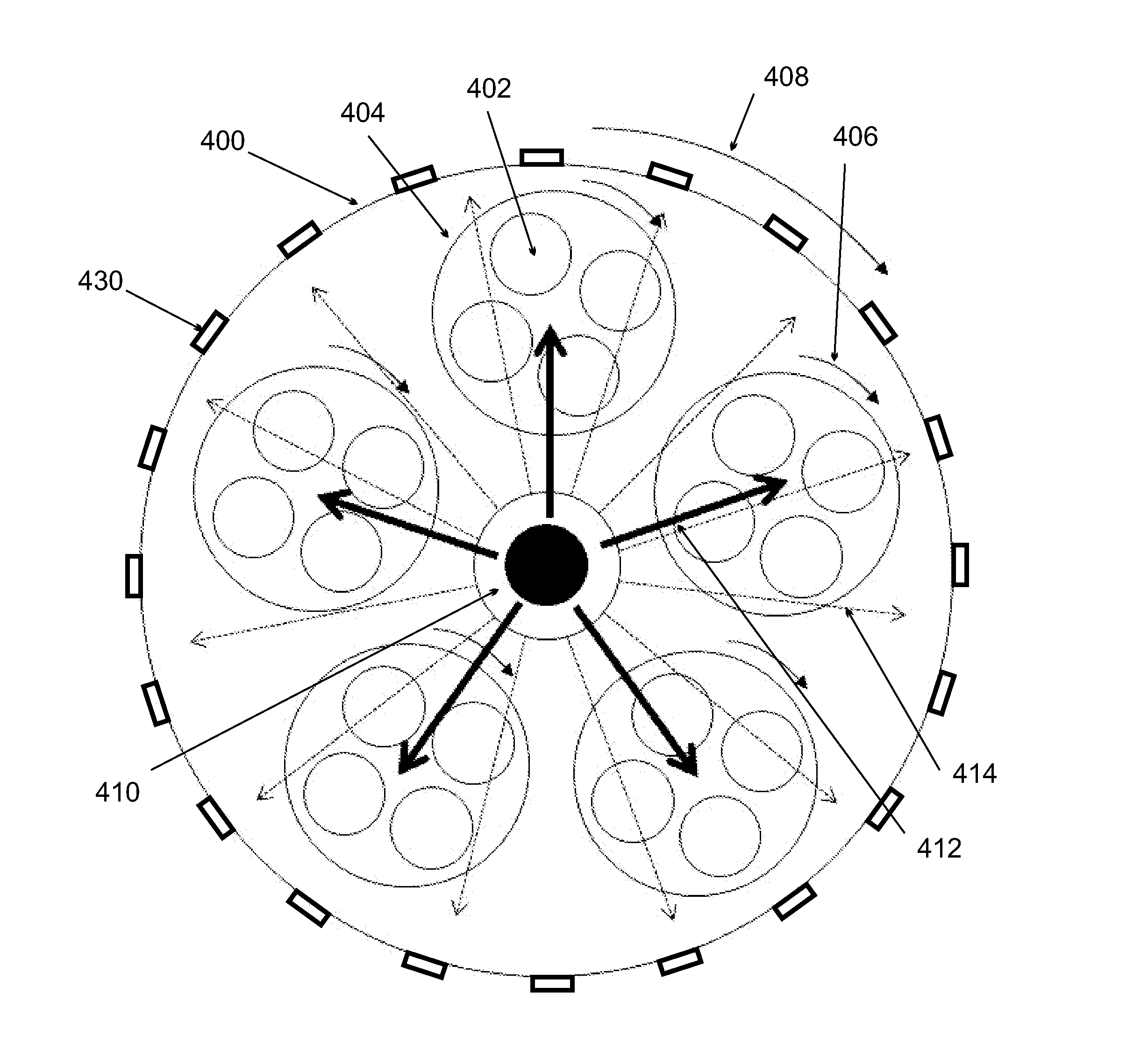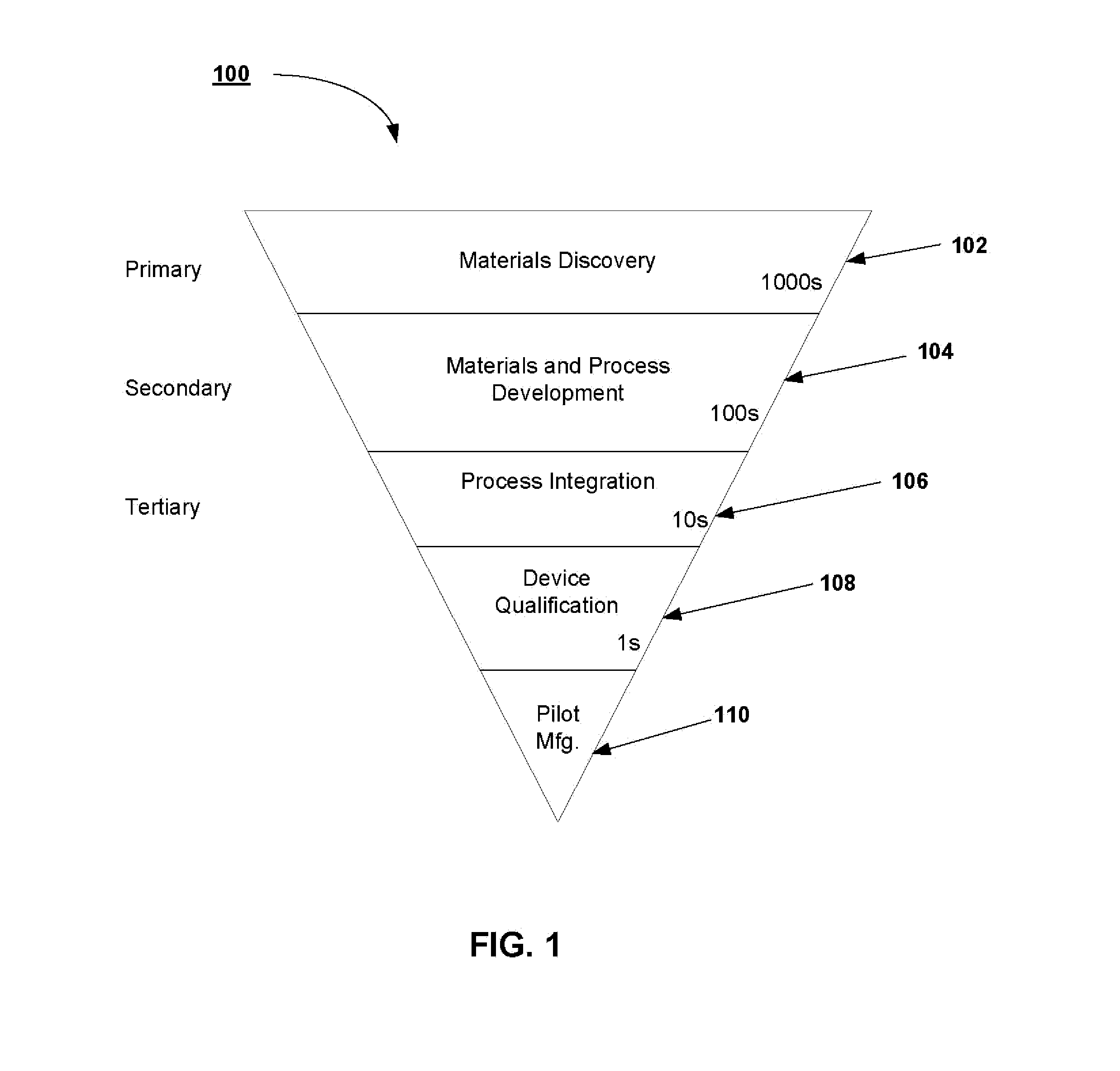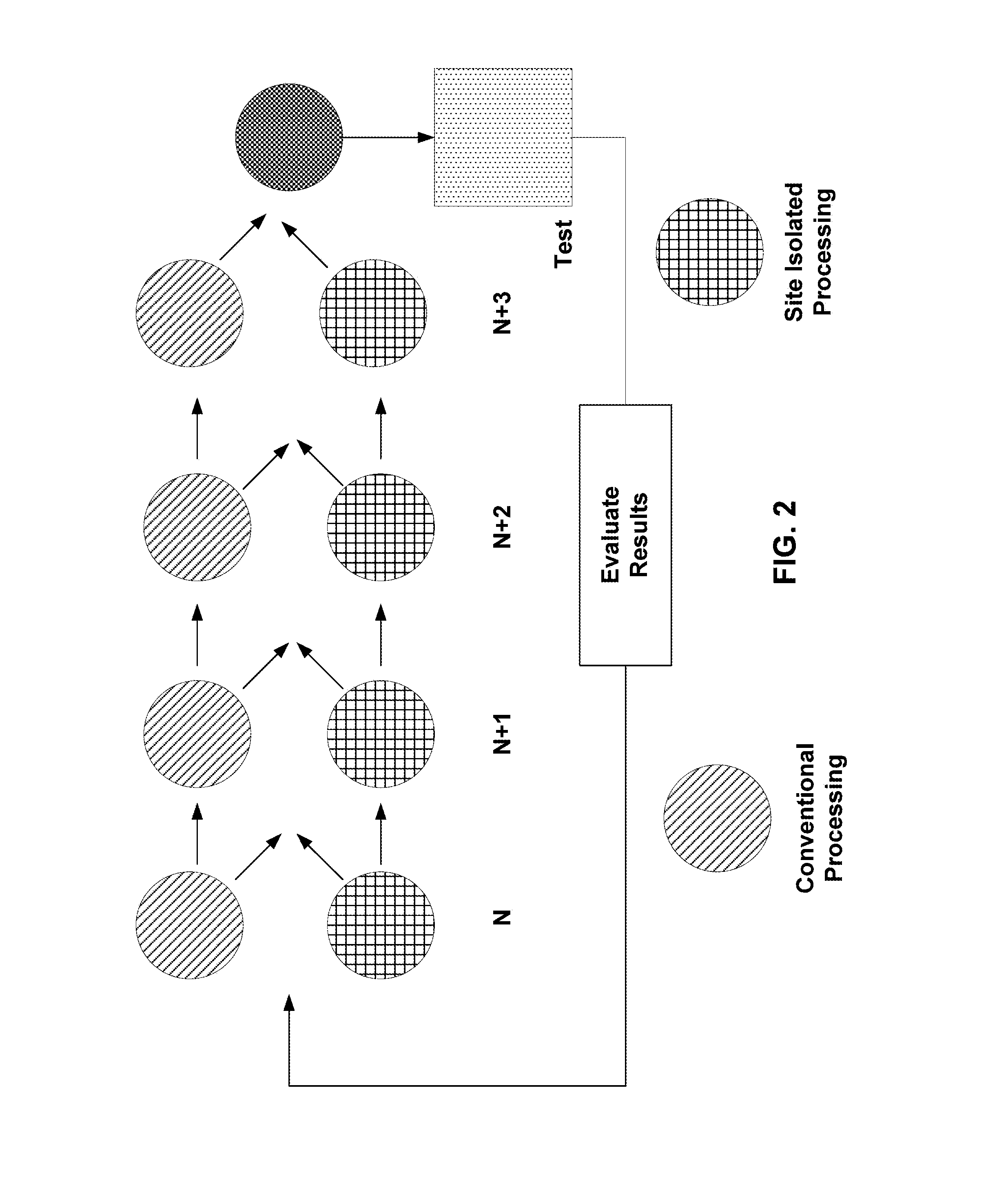High Throughput Processing Using Metal Organic Chemical Vapor Deposition
a technology of chemical vapor deposition and high throughput, applied in the direction of liquid surface applicators, metal material coating processes, coatings, etc., can solve the problems of limited number of cycles of learning in a reasonable amount of time, and the inability to do a large number of experimental splits for device optimization,
- Summary
- Abstract
- Description
- Claims
- Application Information
AI Technical Summary
Benefits of technology
Problems solved by technology
Method used
Image
Examples
Embodiment Construction
[0024]Before the present invention is described in detail, it is to be understood that unless otherwise indicated this invention is not limited to specific layer compositions. Exemplary embodiments will be described for materials produced for LED applications, but bilayers and multilayers comprising optoelectronic and microelectronic devices can beneficially be produced using the methods disclosed herein. It is also to be understood that the terminology used herein is for the purpose of describing particular embodiments only and is not intended to limit the scope of the present invention.
[0025]It must be noted that as used herein and in the claims, the singular forms “a,”“and,” and “the” include plural referents unless the context clearly dictates otherwise. Thus, for example, reference to “a layer” includes two or more layers, and so forth.
[0026]Where a range of values is provided, it is understood that each intervening value, to the tenth of the unit of the lower limit unless the ...
PUM
| Property | Measurement | Unit |
|---|---|---|
| size | aaaaa | aaaaa |
| size | aaaaa | aaaaa |
| size | aaaaa | aaaaa |
Abstract
Description
Claims
Application Information
 Login to View More
Login to View More - R&D
- Intellectual Property
- Life Sciences
- Materials
- Tech Scout
- Unparalleled Data Quality
- Higher Quality Content
- 60% Fewer Hallucinations
Browse by: Latest US Patents, China's latest patents, Technical Efficacy Thesaurus, Application Domain, Technology Topic, Popular Technical Reports.
© 2025 PatSnap. All rights reserved.Legal|Privacy policy|Modern Slavery Act Transparency Statement|Sitemap|About US| Contact US: help@patsnap.com



